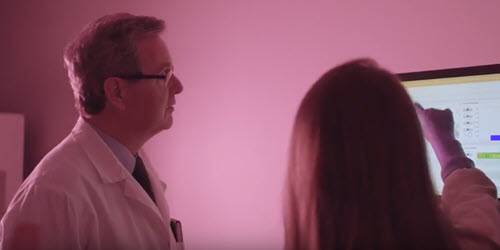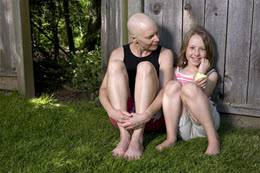Personalized breast cancer screening, based on a person’s genome, would help doctors identify ten times more women at high risk for the disease.
Professor Jacques Simard has a dream. The holder of the Canada Research Chair in Oncogenetics at Université Laval and a researcher at the genomics centre of the CHU de Québec-Université Laval Research Centre wants to be able to predict every woman’s risk for breast cancer using only a saliva sample and information on her lifestyle. Currently in Québec, screening for breast cancer is done by mammography administered to women 50 to 69 years of age and to younger women with a family history of the disease.

Despite these precautions, however, a number of women at high risk for breast cancer slip through the cracks. In response, Pr. Simard is proposing to predict the individual risk for this cancer by using DNA testing and identifying each woman’s risk factors. The goal? To be able to identify the highest possible number of women at high risk and monitor them closely.
Risk based on genetics, not just age
In Québec, one in eight women will develop breast cancer during her lifetime. This risk increases with age: 8 in 10 cases of breast cancer are diagnosed after the age of 50. This is why Québec’s public screening program focuses on women in this age group.

Pr. Simard is no stranger to this area of study. In the mid-90s, he spearheaded an international research which found that women with BRCA 1 and BRCA 2 genetic mutations were 10 times more at risk for the disease. It is precisely because of this genetic anomaly that actress Angelina Jolie opted to undergo a double mastectomy in 2013. Women with family members who have had breast or ovarian cancer can take a simple blood test in a specialized clinic to check if they have the mutations. Thanks to Pr. Simard’s work, women with an elevated risk are now closely monitored by MRI and mammography in order to identify any potential signs of cancer very early on.
This first type of personalized screening helped millions of women around the world better assess their risk for breast and ovarian cancer. However, age and genetic mutations of BRCA 1 and BRCA 2 (about 1 in 400 women) are not the only risk factors involved. “At the moment, the majority of women at a high risk do not carry these mutations. This suggests that other genes or anomalies are at play,” explains Pr. Simard.
A variable risk
In 2017, Pr. Simard announced that he had found 72 new genetic markers specific to breast cancer, for a total of 180 discoveries to date. Unlike mutations that prevent a gene from functioning, these markers are genetic variations that modify the role of certain genes. “Each of these variations, taken individually, only slightly increase the risk for breast cancer. But if a woman has many of them, her risk goes up significantly,” he says. This is in addition to other known risk factors, such as breast density (determined by mammography) and certain lifestyle habits (alcohol intake, exercise, etc.).
To identify women with the highest risk, Pr. Simard and his colleague Anna Maria Chiarelli, researcher at the University of Toronto, and a major international research team are hard at work sequencing the genes of 10,000 women — half of whom have breast cancer — in the hopes of discovering new genes and new rare or common genetic variations involved in the development of the disease. Their discoveries will then be validated among 100,000 women — half of whom have breast cancer — to determine the risk associated with each of the anomalies discovered. The end game? To elaborate and validate a multi-gene test that would include the new breast cancer markers.
| To know or not to know Of course, implementing this very personalized screening test for all women is not without its share of challenges. Will women agree to the screening? If so, how will they react to the results? What are the ethical and legal issues at stake? Will this approach improve the status quo and reduce the disadvantages associated with mammography screening? Jacques Simard and his colleagues hope to find the answers among the 10,000 women currently being monitored by mammography as part of the research project. While Pr. Simard is convinced that personalized screening will save lives and reduce the cost of treatment through early detection, he believes that the approach must be properly managed: “For precision medicine to succeed, we need to make sure that genetic information is well explained and accompanied by actions that are beneficial for the patient, for example, medical follow-up tailored to the women found to be at a higher risk.” |
